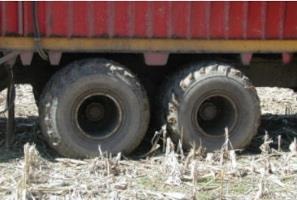By Sjoerd Willem Duiker
Soil is like the skin of the earth - it is a very thin layer but lo, when it is damaged, you are in for major trouble! Farmers are dependent on the health of their soil to reap good harvests while this is also a stewardship issue because soil in poor health will cause environmental problems that affect others, such as greater runoff, erosion and nutrient losses. That is why it is so important to avoid soil compaction. The 2017 Ag Census shows that the number of Pennsylvania farms declined 10% since the previous census (2012) to 53,157 farms, while farmland decreased 6%. Farm size was therefore up 5%. And you get it – larger farms = larger farm equipment = greater threat of soil compaction!

While soil compaction is not a big concern when the soil is bone dry, it is during wet soil conditions such as those we are experiencing this fall that it becomes so important to be set up to avoid compacting your soil. Soil compaction reduces total pore volume by compressing the larger pores in the soil. This leads to higher bulk density, reduced macro-porosity and increased penetration resistance. The implications are reductions in root growth of following crops, increased runoff, increased nitrogen losses due to denitrification and ammonia volatilization, reduced uptake of immobile nutrients such as phosphorus and potassium, and eventually, reduced yields. Equipment can cause surface compaction (<12") and subsoil compaction (>12"). We make the difference because surface compaction has been shown to be primarily related to contact pressure (pounds per square inch), while subsoil compaction is primarily related to axle load (e.g. tons per axle, or per wheel). Surface compaction effects are the most detrimental in the immediate future, but they don’t last as long as the smaller reductions in soil function due to subsoil compaction. This is the result of more biological activity and freeze-thaw and wet-dry cycles in the surface soil than in the subsoil.